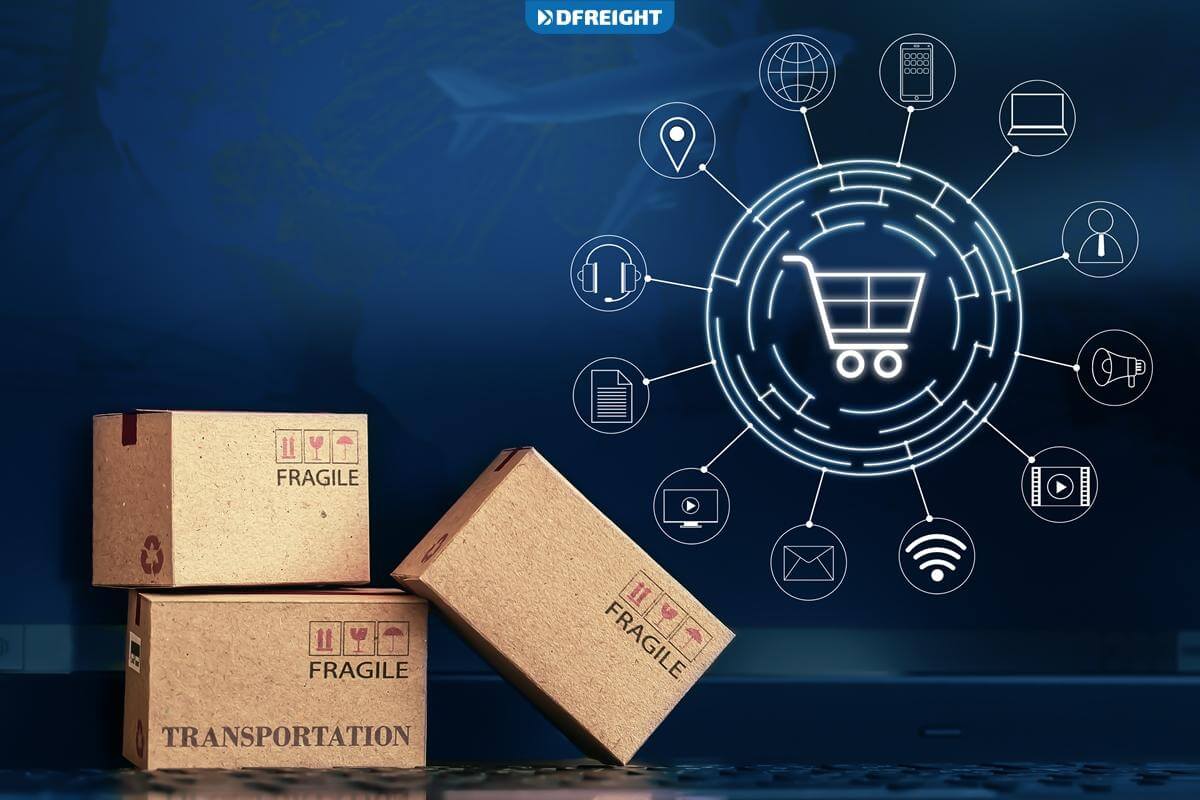The shipping industry is vital to logistics, but it faces many challenges. The logistics industry is known as the core of any supply chain and plays a key role in the economy. When it comes to linking companies to their customers, logistics firms have one of the most crucial responsibilities. as time passes, the evolutionary changes in technology, customer demand, and ever-changing legislation create more hurdles for even the largest logistics organizations. These challenges can cause significant supply chain disruptions and lead to lost revenue and customers. Logistics companies must work to overcome these challenges in order to keep their operations running smoothly. Here are some of the top shipping challenges that logistics professionals face.
Table of Contents
Disruptions to the Supply Chain
The logistics industry is susceptible to disruptions in the supply chain. This can be due to several reasons, such as natural disasters, political instability, or even a sudden demand increase. Disturbances can cause significant problems for logistics companies, as they must scramble to find alternative routes and suppliers. This can often lead to delays and higher costs, which can be passed on to the customer. Disruptions to the supply chain can profoundly impact the logistics industry. In some cases, it can even bring businesses to a standstill. Therefore, logistics companies must have contingency plans in place to deal with disruptions and ensure that their customers are kept informed of any delays or changes.
Costs
As the world progresses, the logistics industry is required to transport an Increasing number of goods over long distances. This has resulted in industry firms raising their rates to cover the high costs associated with long-distance transportation. Shipping and transportation are by far the most expensive cost in logistics.
One of the critical challenges is the increasing cost of fuel. This is a significant expense for logistics companies and significantly impacts their bottom line. We can declare with confidence that this is the single biggest problem in the industry at the moment. In some cases, the transportation costs reach 50% of the product’s value.
By efficiently coordinating incoming orders and consolidating shipments and predicting traffic conditions, it is possible to cut costs. In addition, optimizing shipping routes through data analysis makes it possible to stretch a logistics budget much further. Reducing the mileage ultimately causes decreasing fuel consumption.
Shortage of Drivers
Driver shortages continue to be a significant problem for logistics companies across the globe. These are demanding jobs, and it seems that at the moment, there aren’t enough drivers to fulfill the needs of the industry. Dealing with drivers and transporters are critical necessities that should be addressed with proper supply and demand management.
One of the most effective ways for shippers to attract new drivers is to offer amenities that address the drivers’ interests, requirements, and aspirations. Shippers can begin developing a more positive relationship by demonstrating the importance and necessity of drivers for the company’s growth. On the other hand, you can optimize the routes your drivers are following and stretch the capacity that way.
Improving Customer Service
Markets are dynamic and competitive nowadays, supply chains have grown complex, and customer expectations have shifted. In the logistics industry, improving customer service can be a challenge. This is because the industry is constantly changing and evolving, and companies must adapt to new technologies and trends in order to remain competitive. Additionally, the logistics industry is complex, with many moving parts that must be coordinated to provide a seamless customer experience. When clients place an order with the business today, they have higher expectations of delivery times and service quality.
That said, a few ways companies can improve customer service in the logistics industry. First, they can invest in new technologies that will help them to be more efficient and provide a better customer experience. Additionally, they can review their processes and procedures to ensure they are customer-centric and easy to use. Finally, they can provide training and support to their employees to ensure they can provide the best possible service to their customers.
Security
The logistics industry is a critical part of the global economy, responsible for the worldwide movement of goods and materials. Given the importance of the industry, security is a significant concern.
There are various challenges when it comes to security in the logistics industry. One challenge is protecting the goods and products that are being transported. This can be difficult at many points along the supply chain where goods can be vulnerable to theft or damage. This can be done by ensuring that the vehicles and containers used to transport the cargo are secure and that the drivers are correctly trained in security procedures. Another challenge is to prevent theft and fraud. This can be done by implementing security measures such as CCTV and security guards. The logistics industry is also facing many cyber security challenges. This is because the industry relies heavily on computer systems and the internet. Hackers can target these systems to gain access to sensitive information or disrupt logistics companies’ operations. To counter this, companies must invest in strong cyber security measures such as firewalls and intrusion detection systems.
Government Regulations
There are many government regulations in the logistics industry. Some of these regulations are designed to protect consumers, while others are designed to protect businesses. Several government regulations can be challenging for the logistics industry. Logistics companies should adhere to stringent laws set by federal, state, and local governments. These include environmental rules, safety regulations, and even regulations related to the transportation of goods. All of these regulations can have a significant impact on the way that logistics companies operate and can often lead to increased costs.
One of the main challenges for logistics companies is keeping up with all of the different regulations that are constantly changing. It can be difficult to stay compliant with the various rules, which can often lead to fines or other penalties. Another challenge is that many of these regulations are not always clear, which can lead to confusion and frustration.
Despite the challenges, the logistics industry is still a vital part of the economy and plays an essential role in the movement of goods worldwide. With the correct planning and management, logistics companies can overcome the challenges posed by government regulations.
Environmental Regulations
In recent years, there has been an increasing focus on sustainability and reducing the environmental impact of businesses. This has led to several challenges for the logistics industry, as many of the logistics activities can negatively affect the environment. For example, the transport of goods often requires the use of vehicles that emit greenhouse gases. As a result, logistics companies are under pressure to reduce their emissions in order to meet environmental regulations. It is a challenge, especially for companies with a large fleet of vehicles. Another challenge for the logistics industry is the need to track and report emissions. This is a requirement of many environmental regulations and can be a challenge for companies that have a large number of vehicles.
There are many ways you can do to improve the sustainability of your logistics, including route and load optimization, engine upgrades, Tracking and reporting emissions, and making use of alternative fuels. Even though using any of these routes won’t be inexpensive, it will be worthwhile in many ways.

Digital Transformations
Digital Transformation (DX) is the integration of digital technology into all areas of a business resulting in fundamental changes to how businesses operate and deliver value to customers. The logistics industry is in the early stages of its DX journey, with many companies still relying on traditional methods and manual processes. However, there is a growing recognition of the need to embrace digital technologies in order to remain competitive. This results in investments in new technologies such as cloud computing, data analytics, and the Internet of Things (IoT). These technologies are being used to improve visibility, optimize routes, and streamline operations. As the industry continues to digitize, we can expect even more transformative changes in the years to come.
The logistics industry is under pressure to keep up with the rapidly evolving digital transformation landscape. Consumer expectations have changed dramatically in recent years, and businesses must now provide a level of service that is fast, convenient, and personalized. This is a challenge for logistics companies, which often deal with legacy systems and manual processes. To meet the demands of the digital age, companies in the logistics industry must embrace digital technologies and use them to their advantage.
The most successful logistics companies will be those that can fully leverage the power of digital technologies. This includes using data to gain insights into customer behavior, using the IoT to track assets and optimize routes, and using automation to improve efficiency. By making the most of these technologies, logistics companies can stay ahead of the curve and deliver the level of service that today’s consumers demand.
The first step of progress in this challenge is simply understanding digital transformation and how it can be used to improve logistics operations. Generally, digital technologies are used to improve business processes and procedures. The second step is figuring out how to implement digital transformation effectively and efficiently. There is no one-size-fits-all solution to this challenge, as the best approach will vary depending on the organization’s specific needs. The last step is ensuring the digital transformation initiative does not lose sight of the human element.
Conclusion
The logistics industry is an essential part of the global economy and one that is constantly evolving to meet the needs of the modern world. Despite its many challenges, the industry is continuously finding new ways to overcome them and provide the best possible service to its customers.
Contact us today if you are looking for a logistics company that can provide the best and the most up-to-date services possible. We will be happy to discuss how we can assist you with all your logistics needs.
FAQs
What are the long-term effects of digitalization in the logistics industry?
The long-term effects of digitalization on shipping challenges in the logistics industry are very significant. One of the most important aspects of logistics is coordinating different types of transportation, and digitalization could make this coordination much easier and more efficient. This could lead to reduced costs for logistics companies and their customers and improved customer service.
What are the weather challenges in the logistics industry?
Many weather challenges can affect the logistics industry. These challenges include severe weather conditions that can delay or cancel shipments, extreme temperatures that can damage goods, and inclement weather that can make roads and airports inaccessible.
What are the challenges of damaging goods in the logistics industry?
There are many challenges that the logistics industry faces when it comes to damage to goods. One of the biggest challenges is ensuring that goods are properly protected during transport. This can be a challenge because many different types of transportation can be used, each with its risks.














